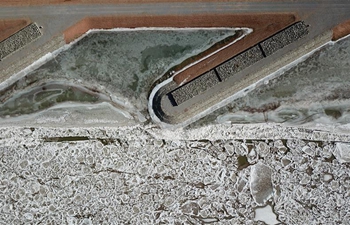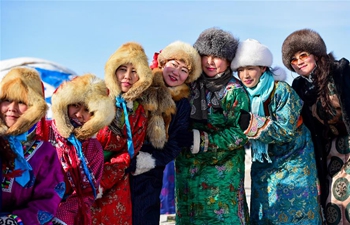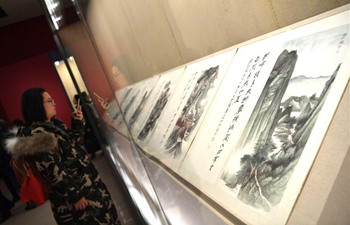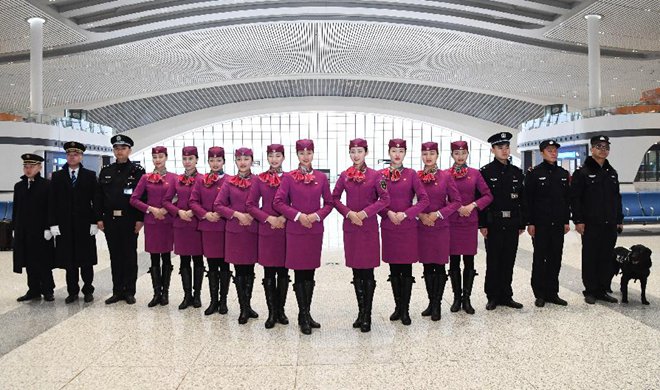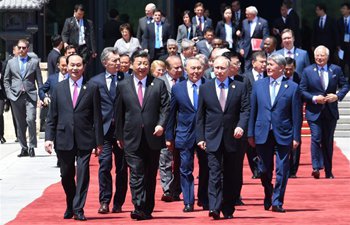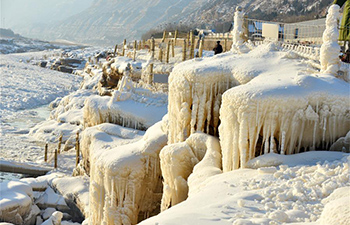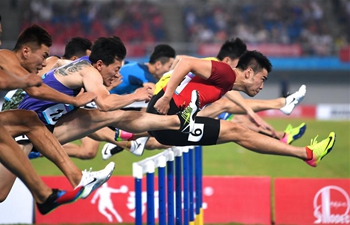BUCHAREST, Jan. 16 (Xinhua) -- Japanese Prime Minister Shinzo Abe Tuesday ended his bustling Eastern Europe visit, five days in six countries, with an unpleasant incident in his last leg in Romania, where the sudden resignation of the country's prime minister left Abe in a disturbed agenda.
Instead of meeting with his Romanian counterpart, Abe joined his wife's agenda to visit the Village Museum.
In such an unexpected way, the Japanese prime minister had to end his six-country European tour, through which he sought to lobby for more support to Japan's free trade pact with European Union (EU).
But compared with the core aim of Abe's tight-scheduled Eastern Europe visit, how to end it seems not so important.
Seeking the rapid ratification of a trade accord with EU is the final target of Abe's visit.
The trade agreement between Japan and the EU, the Economic Partnership Agreement (EPA) was reached last December during the Estonian presidency of the Council of the EU. Yet, the ratification process in Europe could face risks, as it was revealed that the recently closed trade deal with Canada has been almost blocked by political leaders of Wallonia, a region of Belgium.
To avoid the worst situation, Abe started his European tour with Estonia, focusing intensely on assuring support for the most-needed free trade agreement with EU.
And the trade deal is indeed a most-needed one for Japan and for Abe, whose economic policies just focus on boosting the economic growth of the country, including a stubborn devaluation of its currency in order to help exporters.
The Japanese government estimated that the EPA trade deal will add 45 billion U.S. dollars to Japan's economy every year and will create 292,000 jobs.
To win the hearts of the Eastern European countries, Abe has promised big, from the strategic partnerships with Romania and three Baltic countries to more investment to the region.
In Bulgaria, the current presidency of the European Council, Abe agreed with Prime Minister Boyko Borissov to work together to speed up the implementation of the Economic Partnership Agreement.
In Romania, the presidency of the European Council in the first half of 2019, the final and most sensible moment for the implementation of EPA trading bloc, Abe discussed the EPA developments with the Romanian president and managed to win his full support. The Japanese prime minister said that central axes of its visit in Romania was boosting trade and investments, and especially mentioned that Japan had lifted the visas for Romanian citizens.
Accompanied Abe was also a delegation of 30 Japanese business leaders, who have separate agenda of identifying investment and trade opportunities.
But the only concrete deal announced so far was an agreement to build a desulphurization unit for the Nikola Tesla power plant in Serbia.
The outcome is not so unexpected considering Japan's current economic bonds with these European countries.
Among them, Romania is a relatively strong trade partner of Japan in the region, with bilateral trade reaching 680 million euros in 2015, exporting mainly wood furniture, clothes, and importing cars and electrical equipment. But Japan is only the 25th foreign investor in Romania with some 180 million euros (216 million U.S. dollars) invested mainly in automobile-related industries.
Japanese trade with Baltics countries, Estonia, Latvia and Lithuania, is modest, while the economic ties with Bulgaria and Serbia are even weak.
But, it became apparent that Japan has started to seek some changes.
The EU-Japan EPA is one of the largest and most comprehensive economic agreements that either the EU or Japan has concluded so far.
It will remove the vast majority of the 1 billion euros of duties paid annually by EU companies exporting to Japan, as well as a number of long-standing regulatory barriers.
It will also open up the Japanese market of 127 million consumers to key EU agricultural exports and will increase EU export opportunities in a range of other sectors.
But the agreement needs the approval of the European Parliament and EU member states and expected to enter into force before the end of the current mandate of the European Commission in 2019.






